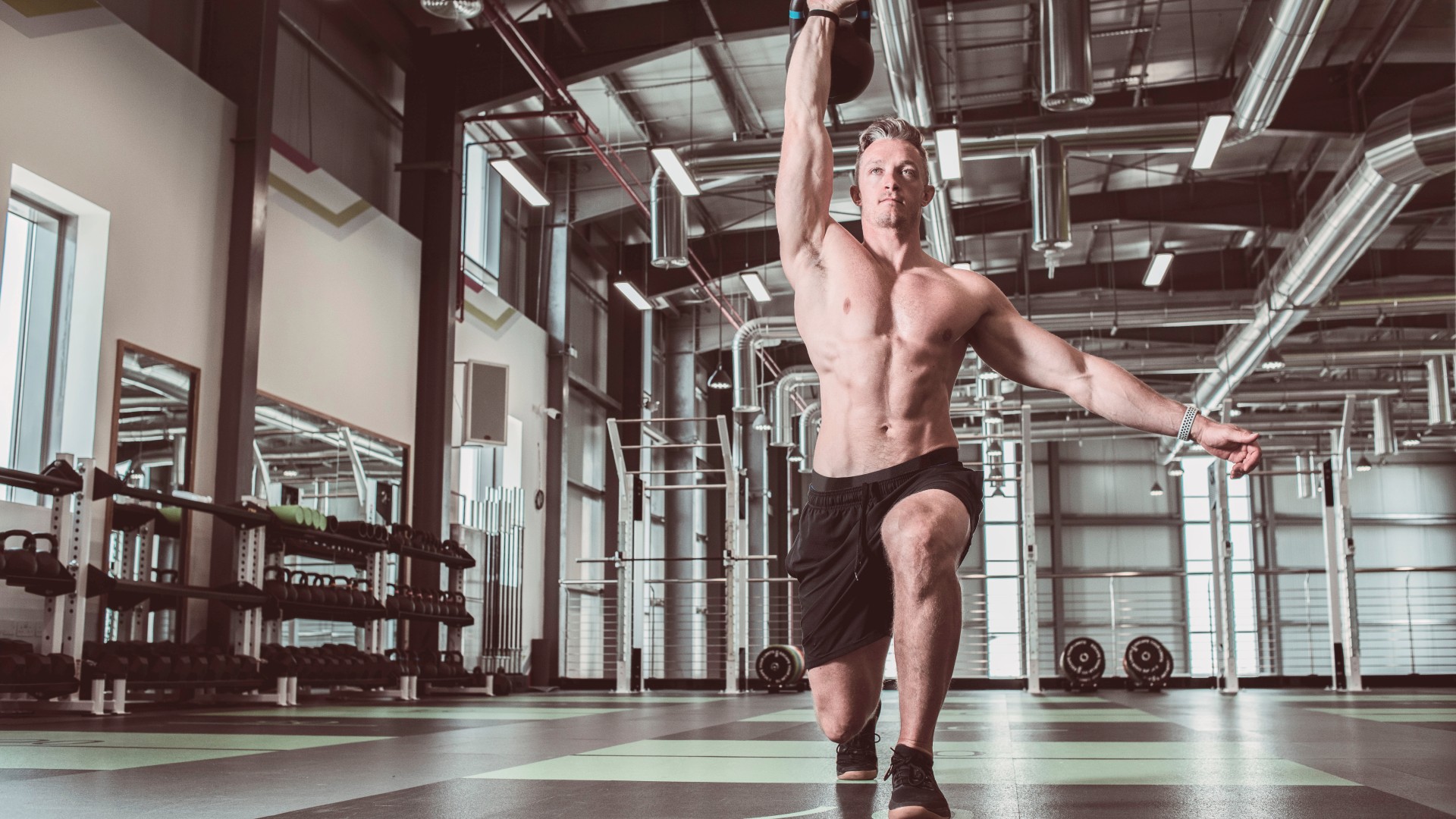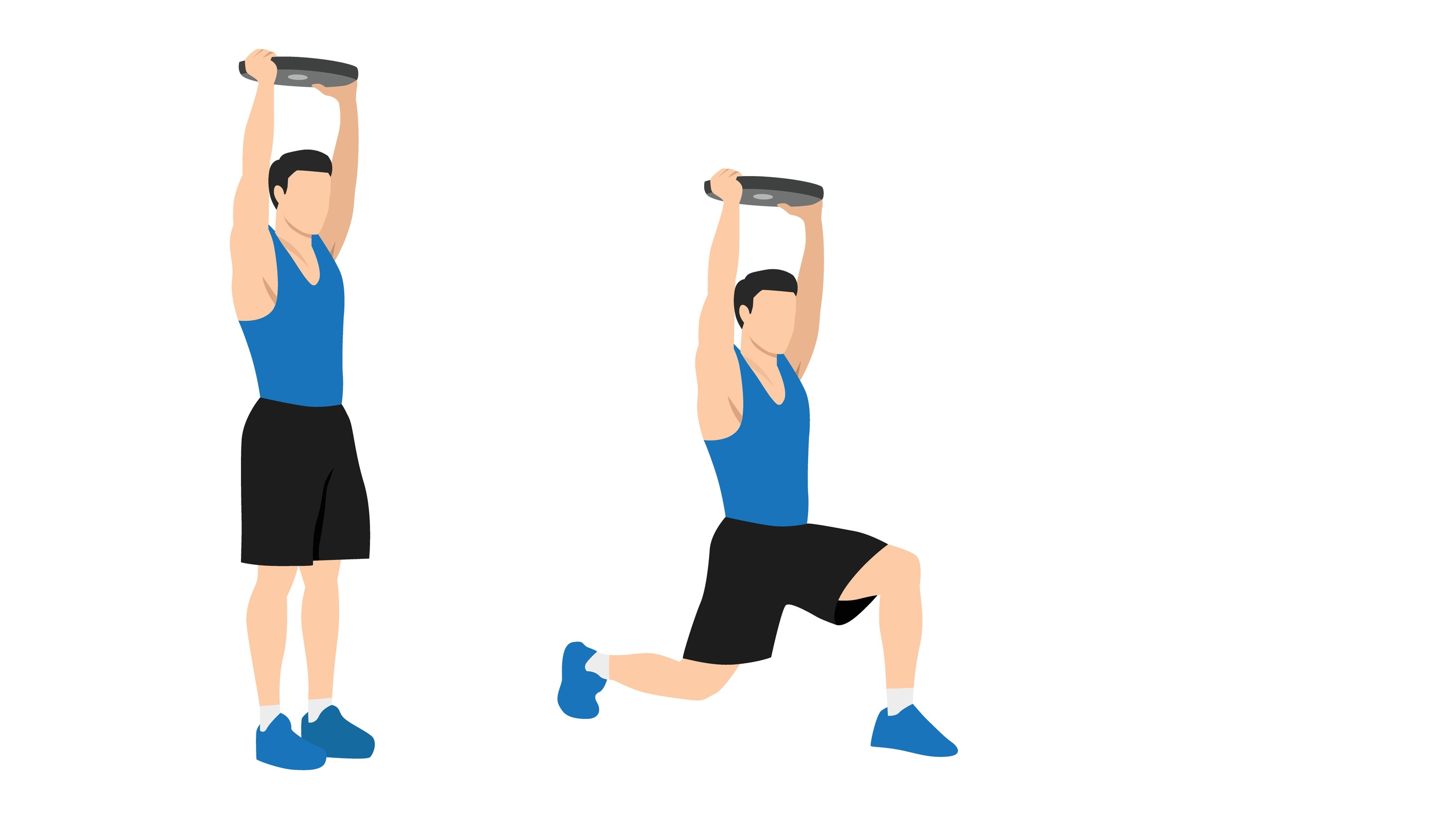
It’s hard to think of an exercise I dislike more than weighted walking lunges — except overhead walking lunges. The “simple” act of lifting my arms into the air, biceps hugging close to my ears and triceps trembling while wielding a dumbbell (or two) as I lunge makes me want to crawl under a rock.
Alas, I work on Tom’s Guide’s fitness desk, willingly taking on fitness challenges designed by my own fair hand. And I landed on this predominately lower-body, but actually full-body, exercise.
Find out what happened when I did 50 overhead walking lunges every day for seven days — and why I’m surprised that I didn’t hate it.
How to do overhead walking lunges

You can hold a weight in each hand (I chose dumbbells and recommend the best adjustable dumbbells if you want to scale weights quickly) or use kettlebells, a plate, ball, or barbells.
Unless you’ve got the grip strength of a free climber, you’ll find it easier to load heavy using barbells, but your shoulder and core stability will also determine how heavy you go. You could work unilaterally (single-sided) or hold a weight in each hand or one in both hands — the choice is yours.
How:
- Press your weight or weights overhead so that your wrists stack over your shoulders, biceps hugging close to your ears
- Pull your shoulder blades back and down and brace your torso, ensuring your arms are locked out (you can keep a soft elbow bend if using one weight with both hands)
- Keep your spine tall without arching your back — avoid leaning forward, backward, or sideways
- Start with your feet hip-width apart. With control, step your left foot forward while keeping the weights secure overhead and lower into a lunge, tapping your right knee close to the floor without smacking it down
- Plant your front heel down, draw your knee forward over the heel, sit on the ball of your right foot and squeeze your right quad
- Drive up to stand, step your right foot immediately forward to repeat on the right side. If this is too challenging, step back to center first, then step forward.
You can learn how to do walking lunges in more detail here.
I did 50 overhead walking lunges every day for one week — here’s what happened
Before we get into it, I wouldn’t recommend 50 weighted lunges per day in “everyday life.” It was a standalone challenge, and I kept up my regular exercise routine, scaling back any big leg day programs until my muscles had time to rest.
What works for me might not for you, so if you plan to practice walking lunges, I don’t recommend bulking up on high reps each day for the long term. Plan your workouts with structure and consistency, gradually adding volume or load, and include other lower-body strengthening exercises in your routine.
My legs took a beating
Surprised? Of course not. But first and foremost — ouch, my legs. Lunges have a way of humbling me, no matter how much time I dedicate to them.
Reverse lunges are “easier” and more accessible for beginners, reducing the front load on the knee by stepping the leg backward instead, and they also help beginners to balance and coordinate better, which can also help when learning overhead lunges for the first time.
I tend to stick to them during CrossFit workouts and leg day routines, but no such luck during this challenge. Walking lunges take you in one direction, and that’s forward; this requires balance and stability, and you’ll likely experience a few wobbles here and there (I did) while stepping and landing the lunge with your front foot. It’s tough, but at 50 reps a day — that’s no surprise.
The exercise is a full-body masterclass
Seriously, it’s easier to list what the benefits aren’t rather than what they are.
If you’re wondering what muscles overhead lunges target, it’s not just your legs. The move strengthens the quadriceps, hamstrings, calves, gluteus muscles, hips, core, shoulders (the deltoids), arms (biceps and triceps) and back (the upper and lower trapezius).
Holding the overhead position requires core and shoulder strength and stability, but the exercise builds it, too. While performing the move, I had to focus hard on balancing the weight and controlling my upper body under load while working one leg at a time, mimicking other unilateral movements like running, walking, or cycling.
Regular practice could improve balance, proprioception (your body’s spatial awareness) and coordination, recruiting stabilizer muscles like the abs, shoulders and hip flexors to help drive the movement as you shift weight from one side to the other.
I struggled with shoulder and back mobility
As mentioned, it takes a great deal of shoulder and core recruitment to keep the torso braced and upright, shelving the weights in an overhead position.
As I walked, I noticed I sent the weights forward and wide. I struggle with a tight back and limited shoulder mobility, so I find it tough to pull my shoulder blades together and drive my arms back to create a shelf for the dumbbells. Having a tight back also limits my upper body mobility, making the lunge position harder to drop into without sending the weights traveling.
I added a 5-minute upper-body mobility drill and hung from my gym's pull-up bar exercise before each session, which helped prepare my back, arms and shoulders for movement. And it helped.
I lifted lighter weights
Because I have limited upper body mobility and a weak left shoulder, I tailored to my weakest side and worked at a much lighter weight than I can usually drive overhead. Frustrating but necessary, it helped keep my form in check, my torso upright and my arms punched overhead.
Even though it's annoying, try to always lift the same weights on both sides to counteract any existing imbalances.
My technique has started to improve
Nothing life-changing has happened, but I had to work hard not to overlean or lose control of the dumbbells and keep my spine tall as I lunged, and over the week, I noticed some improvements to my form while staying consistent with the weight.
I wanted to stick to a variation that allowed me to measure any progress throughout the week, but I did mix it up slightly, switching between single-arm overhead lunges and dual-loading dumbbells.
Single-arm overhead lunges had me lift less weight, but the research on unilateral loading tells us that it’s beneficial for developing unilateral movement patterns. We also know that this training form helps balance and coordination, but perhaps more importantly, it can help correct muscular imbalances picked up from barbells or gym machines.
Verdict
Adding free weights and unilateral exercises to any exercise routine can help build and strengthen any weaker, underused muscle groups that sit dormant when the dominant side of the body picks things up. If you often lift using barbells then switch to dumbbells, you might notice the difference.
I do a lot of CrossFit and yoga, which are heavy on the single-sided exercises, so I’m very aware of how weak the left side of my body is from a previous injury compared to my right. I’m trying to add more of these unilateral exercise types, like overhead walking lunges, to help combat the weakness and even things up.
Even over a short time, I’ve noticed an improvement in my form by using awareness, reducing the load to focus on form and taking time to practice. It’s tempting to avoid exercises you’re not “good at,” but tackling them head-on tends to help, not hinder.







